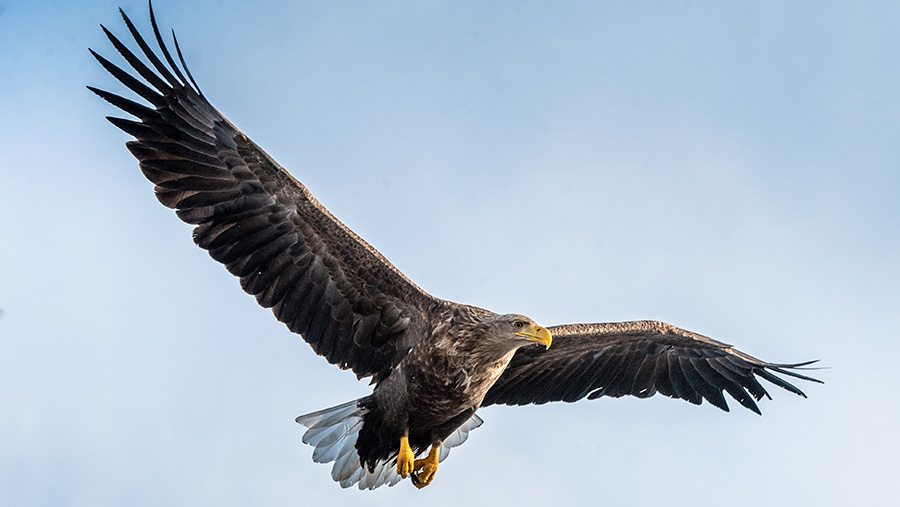NFU Scotland disputes study claims on sea eagle predation
 © Uryadnikov Sergey/Adobe Stock
© Uryadnikov Sergey/Adobe Stock A new study has concluded that lambs are not a major source of predation for breeding white-tailed eagles in Scotland, but farmers beg to differ.
But NFU Scotland (NFUS) has cast doubts about the report and insisted that individual birds are habitually killing lambs and occasionally older sheep as part of their diet.
This is having a “significant impact” on those farmers and crofters affected, said hill farmer David Colthart, based in Appin, near Oban.
See also: Scots sheep farmers in sea eagle plea to government
Mr Colthart is one of 180 farmers and crofters who have signed up to Nature Scot’s Sea Eagle Management Scheme (Sems).
He says all are regularly suffering losses of lambs to white-tailed eagles, and the need for management will only continue to grow as the species continues to multiply.
The study assessed the diet of breeding white-tailed eagles, also known as sea eagles, between 1998 and 2017.
Seabirds and fish ‘most important source’
It found that marine prey of seabirds and fish was the most important food source for sea eagles, while the occurrence of lamb in their foods decreased as more pairs have established.
Between 1998 and 2002, 15 nests were sampled and lambs accounted for more than 30% of items in five of those nests.
But by the end of the study in 2017, lambs accounted for 30% or more of items at five of 58 nests sampled, suggesting a fall in reliance of lambs for the birds’ food.
The peer-reviewed study was carried out by a group of white-tailed eagle experts and was published in the Scottish Ornithologists’ Club (SOC) journal, Scottish Birds.
RSPB Scotland said they hoped the findings of the study would give some reassurance to farmers and crofters who are concerned about their livestock being preyed on.
Study deficiencies
But Mr Colthart highlighted several problems areas with the study, including a decline in livestock numbers in some areas over the period of the study, the failure to consider the impact many juvenile birds may have had, or what is killed and eaten away from the nest and not taken back.
NFUS said it was focusing on continuing to support farmers and crofters that are experiencing serious issues with sea eagle predation and support the White-tailed Eagle Action Plan and Sems.
Since white-tailed eagles were first released in the western isles of Scotland in 1983, the breeding of these apex predators has been such a success that there are now more than 175 breeding pairs, which are widening their territory in search of food sources and habitat.
